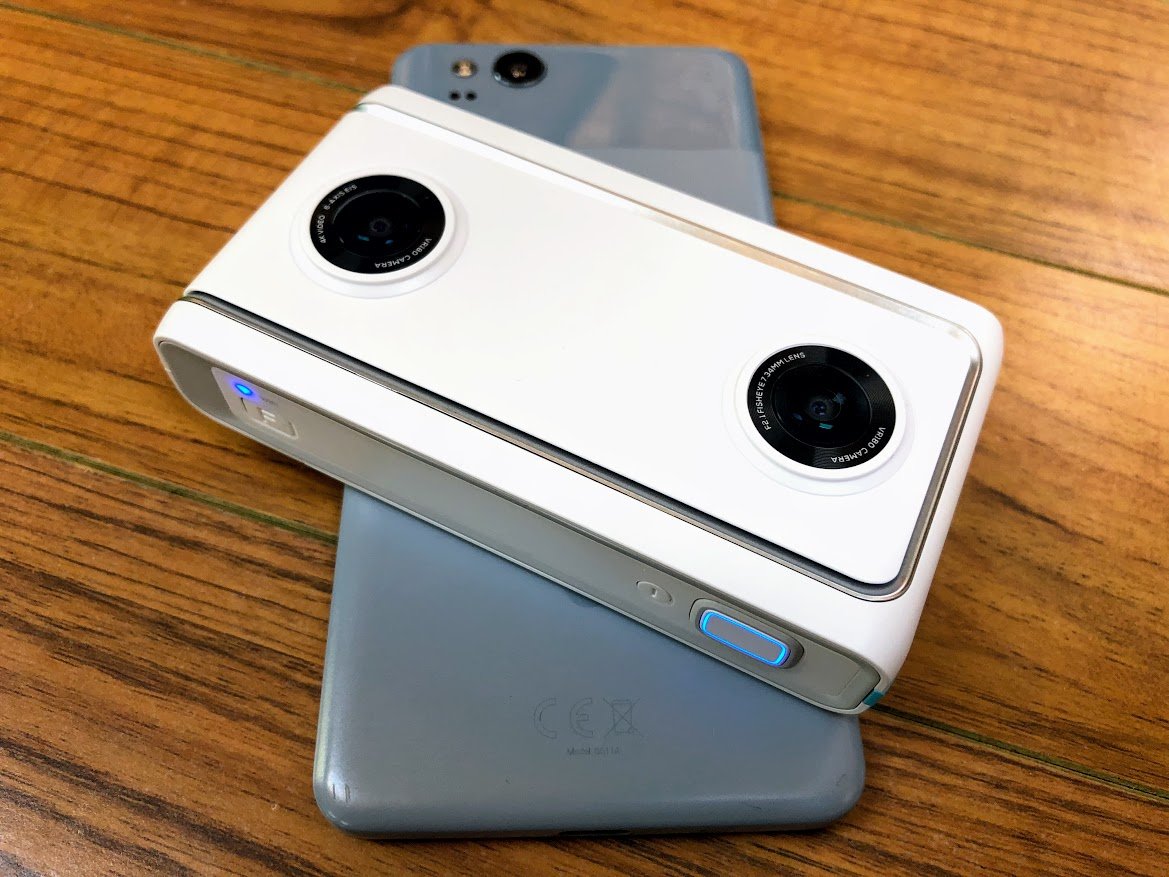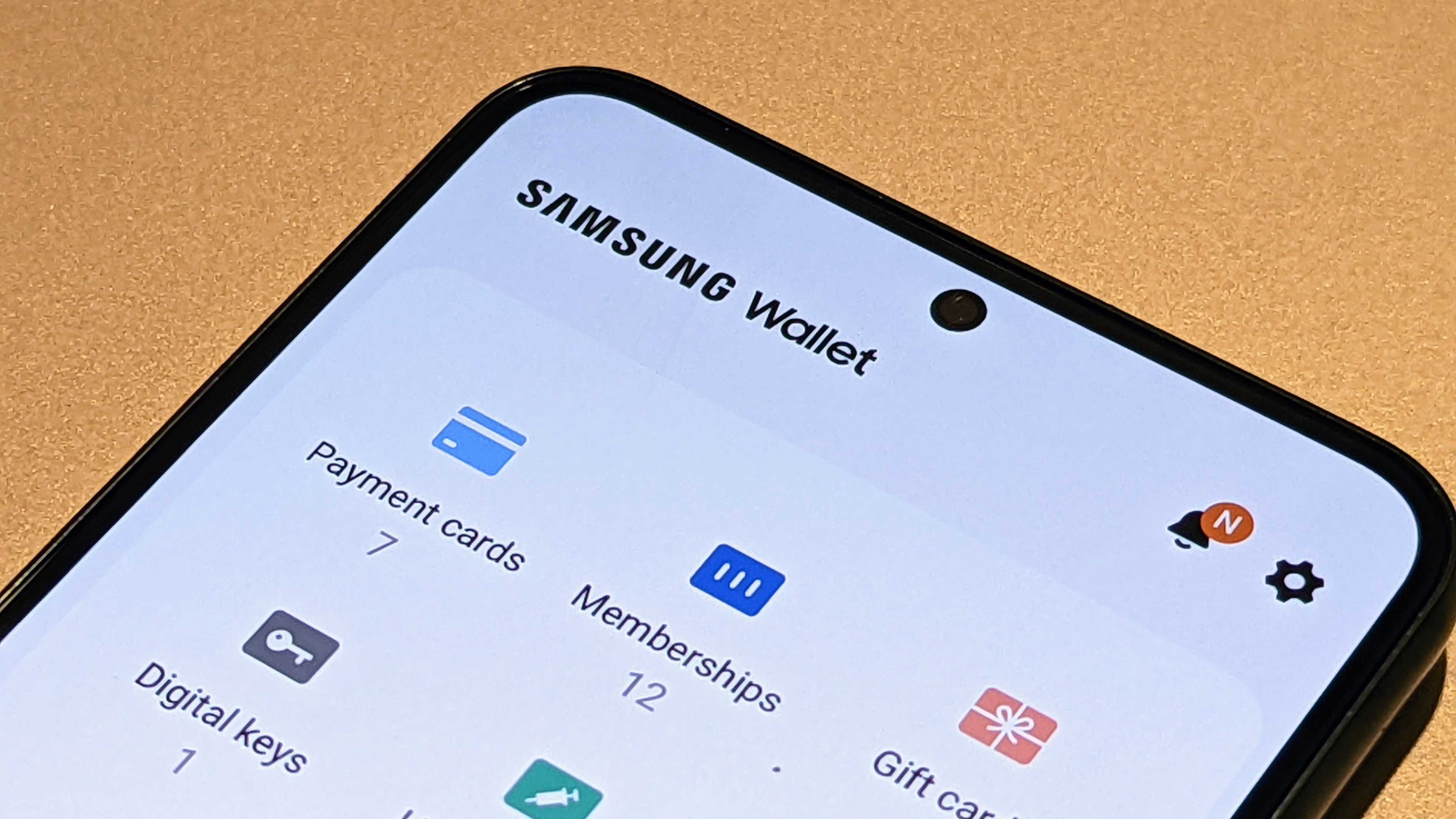AC
Score
4
Capturing photos and videos for VR is a lot of work. It's a common misconception that all you need is one of the nice 360-degree cameras that are available today, but those cameras aren't actually great for viewing in VR. While you can turn your head and see the whole world from a unique perspective, you're still only seeing a 2D image in a headset built for showing you depth. Google's JUMP program has made spectacular progress in making tools for creators eager to capture depth in that 360-degree format, but that is hardly something you can slide into your back pocket.
Google's VR180 program is something different, a way to encourage creators to capture images for VR with easy-to-use software and comparably inexpensive hardware. The first effort in this program is powered by Lenovo, called the Mirage Camera, and it's a solid step forward in making VR capture a lot better for everyone.
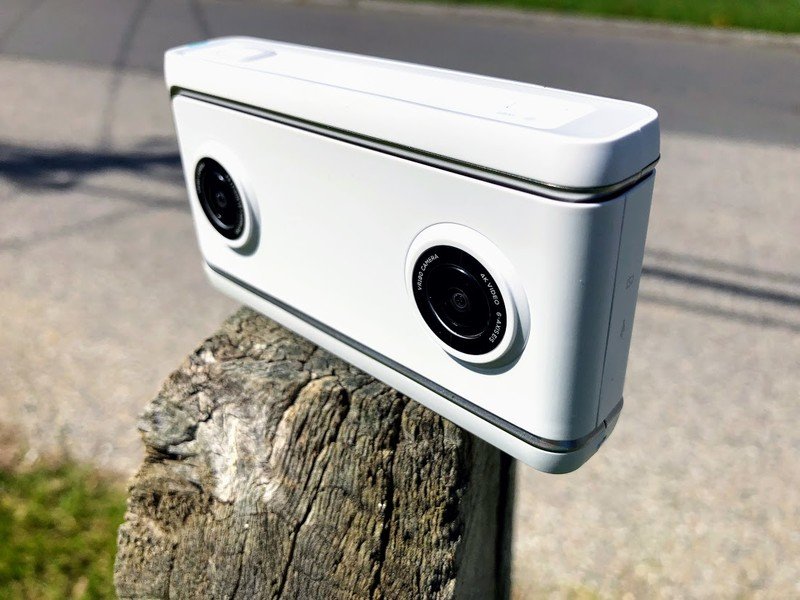
There's not much to say about this camera when it comes to looks. It's a block, roughly twice the thickness of an average phone, but not nearly as tall or wide. That makes it not quick pocket-sized for me, but easily small enough to toss in a bag when I'm on the go. There's no display on the back, but after using it for a week I didn't really feel like I needed it. It's a simple little box, and the little shot of color Lenovo added to its logo looks great.
Everything about the Mirage Camera is about ease-of-use. You're ready to go as soon as you take it out of the box. Insert the battery (two are included), tap the power button, and hit the shutter when you're ready. The camera has 16GB of onboard storage for local things, or you can toss in up to 256GB of microSD storage for larger projects. You charge the camera from the USB-C port on the side, and that's... it. Point the two lenses on the front in the direction you want to capture, and use it like any other point-and-shoot. There's a toggle on the camera for switching between photo, video, and live streaming, and the lights down the back side make it very clear which mode you are on.
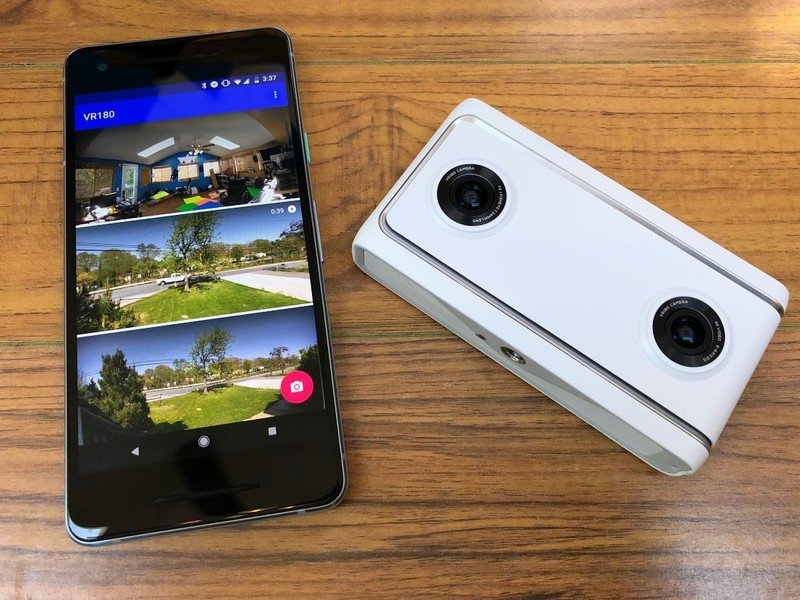
If you want to do something with a little more planning, like maybe framing the shot before capturing or mounting the camera somewhere unusual, you can pair your phone to the camera and use it as a remote viewer. The VR180 app connects via Bluetooth for remote capture, and gives you a quick look at what you'll be capturing before you do. You can use this as a remote shutter, but you can also control the resolution of the images and video, too. Settings allow you to go up to 4K for video and 9MP for video, including live streaming. Naturally, you can also use the app to see what you've captured, as well.
Lenovo's hardware gets out of the way of Google's software brilliantly.
While you can sync to your phone via Bluetooth if you like, the app offers a few different options. If you're near a Wi-Fi network, you can connect the camera and set it to auto-backup to Google Photos. If your phone is on the same Wi-Fi network, it will use it to transfer the photos or video to local storage as well, which would obviously be much faster than Bluetooth. The biggest feature here is simplicity, and Google has absolutely nailed it. Even software updates for the camera happen with ease, and only happen when you're on Wi-Fi.
Capturing with this camera takes some getting used to. Some lessons from 360-degree cameras apply, like being aware of where your fingers are. With 360-degree cameras you hold with your hand there's always a risk of that gross hairy knuckle suddenly very close to the camera. With VR180, you just have to make sure your fingers don't slide over the front edge of the camera body. You really are capturing a 180-degree image, but you adjust quickly.

Google's software for video capture is a little different than what you may be used to with 360-degree videos as well. There's nothing going on behind you when you start watching, and the user is standing still. This means if you move the camera, the person watching in VR will be rotated into darkness unless they move their head to match. Google said this was done intentionally to dramatically reduce nausea in motion videos, and in my testing, it works very well. It means the person watching in VR has to do a little extra work to move around, but that is much better than the alternative.
The only place the camera tends to struggle a little is when capturing audio. The microphones struggle with spatial audio, so hearing voices from multiple directions isn't quite as obvious as it should be. When outdoors, the microphones tend to handle wind poorly as well. You'll get roughly the same audio you get with your phone, which can be great in some places but not everywhere.
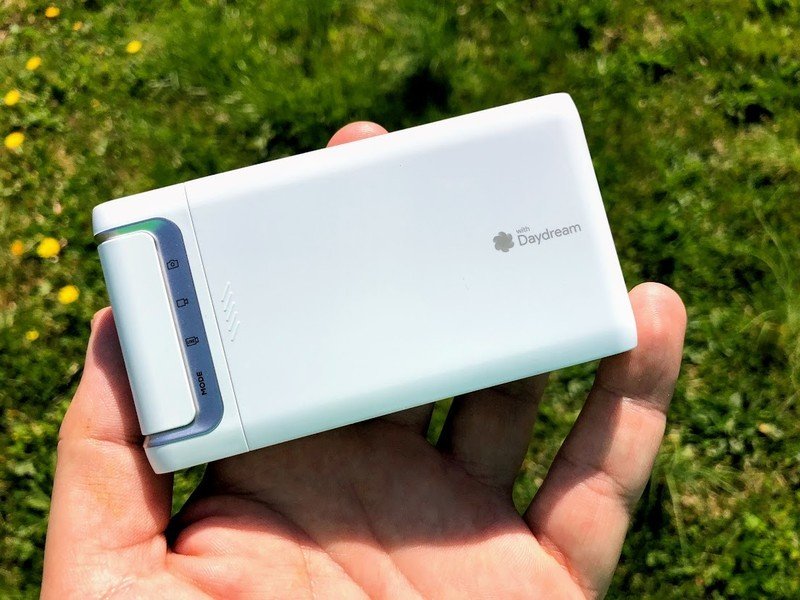
Since everything backs up to the Google Photos app, sharing is simple, too. If you share a Photos link with someone, the recipient can see everything in either 2D on a flat screen or in VR with just about any headset. Even if all you're doing is passing around Google Cardboard with your phone in it at a family event, the VR immersion takes a huge step in making the viewer feel like they were there.
I would happily buy one of these over a 360-degree camera in most situations.
In a way, this camera feels like a larger sibling to the fairly recent Google Clips camera. Where that camera focuses on being the photographer while you are busy, VR180 is all about putting you in that moment again so you feel like you were there. While it may be cool to see these two ideas merge at some point in the future, the big thing these products share is how dead simple they are to use. Lenovo's hardware gets out of the way of Google's software brilliantly, and the soft carrying pouch included in the box encourages me to bring this thing with me everywhere.
This is a great, simple camera. Lenovo's hardware is comfortable to hold, and Google's software couldn't be easier to understand. I would happily buy one of these over a 360-degree camera in most situations, and with its $300 price tag that's the decision a lot of would-be owners will be making. I probably wouldn't recommend this camera as a replacement for action cams like some folks do with 360-degree cameras, but for most everything else this camera is the one I will be recommending for quite a while.
